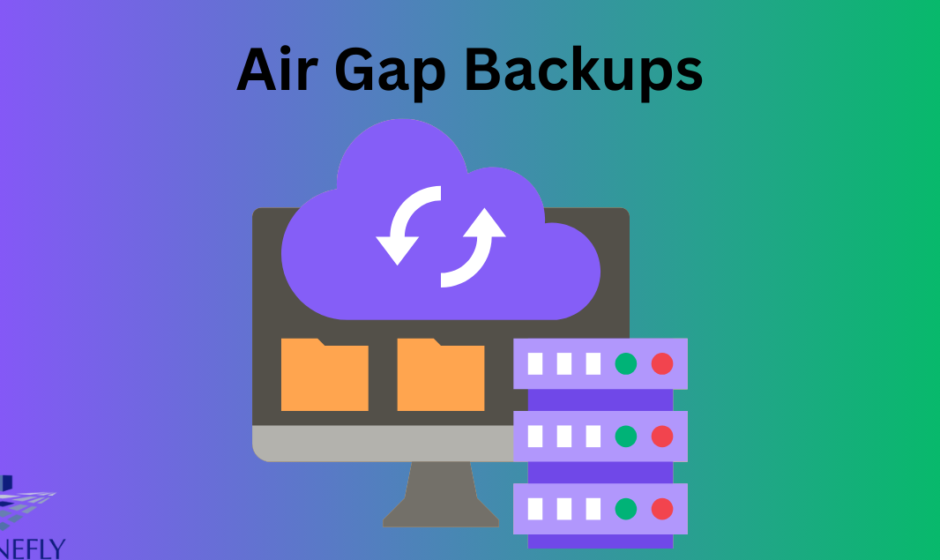The Ultimate Guide to Air Gap Backups for Data Security
In today’s digital age, cybersecurity threats are more prevalent and sophisticated than ever. From ransomware attacks to data breaches, businesses and individuals alike must adopt robust strategies to safeguard their valuable information. One of the most effective solutions is air gap backups. In this comprehensive guide, we’ll explore what Air Gap Backups are, how they work, and why they are essential for data security.
Introduction to Air Gap Backups
An air gap backup is a security measure that involves isolating a copy of your data from your primary network. This physical separation prevents cybercriminals from accessing and compromising the backup, even if they manage to breach your main network. Air gap backups are crucial because they provide an additional layer of protection against data loss and cyber attacks.
In an era where data is the backbone of virtually every operation, ensuring its safety is paramount. Without adequate protection, businesses risk losing critical information, facing financial losses, and damaging their reputations. By incorporating air gap backups into their cybersecurity strategies, organizations can significantly enhance their resilience against cyber threats.
This blog post will guide you through the ins and outs of air gap backups, offering practical insights and actionable tips to help you secure your data effectively.
How Air Gap Backups Work
Air gap backups operate on the principle of physical isolation. Unlike traditional backups that are connected to the network, air gap backups are stored offline, making them inaccessible to remote attackers. Here’s a breakdown of how this technology works:
- Data Duplication: First, a duplicate of your critical data is created. This ensures that even if the original data is compromised, you have a secure backup available.
- Physical Separation: The backup is then stored on a medium that is physically disconnected from the primary network. This can include external hard drives, tapes, or other storage devices.
- Periodic Updates: To keep the backup current, periodic updates are performed. However, these updates are done manually or through a controlled process to maintain the air gap.
- Offline Storage: The backup medium is stored in a secure, offline location, ensuring that it remains safe from online threats.
By following these steps, air gap backups provide a robust defense against cyber attacks, ensuring that your data remains secure even in the face of sophisticated threats.
Benefits of Air Gap Backups
Protection Against Ransomware
Ransomware attacks are one of the most significant cybersecurity threats today. These attacks involve encrypting a victim’s data and demanding a ransom for its release. With an air gap backup, even if your primary data is encrypted, you have a secure, uninfected copy available. This eliminates the need to pay the ransom and allows you to restore your data quickly.
Regulatory Compliance
Many industries are subject to strict data protection regulations, such as GDPR, HIPAA, and CCPA. Air gap backups can help organizations meet these regulatory requirements by providing a secure method of data storage and recovery. This not only ensures compliance but also protects against potential legal and financial penalties.
Data Integrity
Data integrity is crucial for maintaining the accuracy and reliability of information. Air gap backups protect against data corruption and unauthorized modifications, ensuring that your backup remains an accurate and reliable copy of your original data. This is particularly important for businesses that rely on data for decision-making and operations.
Implementing Air Gap Backups
Assess Your Needs
Before implementing an air gap backup strategy, it’s essential to assess your specific needs. Consider factors such as the volume of data, the frequency of updates, and the criticality of the information. This will help you determine the best approach for your organization.
Choose the Right Storage Medium
Selecting the appropriate storage medium is crucial for the success of your air gap backup strategy. Options include external hard drives, tapes, and other removable storage devices. Each medium has its advantages and disadvantages, so it’s essential to choose one that aligns with your needs and budget.
Establish a Backup Schedule
Consistency is key when it comes to air gap backups. Establish a regular backup schedule to ensure that your data is always up-to-date. Depending on your needs, this could be daily, weekly, or monthly. Remember to manually disconnect the storage medium after each update to maintain the air gap.
Secure Offline Storage
Store your backup medium in a secure, offline location. This could be a safe, a locked cabinet, or any other secure area that is not connected to the internet. Ensure that only authorized personnel have access to the backup to prevent unauthorized modifications.
Examples of Successful Air Gap Backups
Case Study 1: Financial Institution
A large financial institution implemented air gap backups to protect its sensitive customer data. By storing backups on external hard drives and keeping them in a secure location, the institution was able to recover quickly from a ransomware attack without paying the ransom. This move not only saved the organization millions of dollars but also protected its reputation and customer trust.
Case Study 2: Healthcare Provider
A healthcare provider faced strict regulatory requirements for data protection. By adopting air gap backups, the provider ensured compliance with HIPAA regulations and safeguarded patient records. The air gap strategy allowed the organization to recover from a cyber attack swiftly, ensuring that patient care was not disrupted.
Case Study 3: E-commerce Company
An e-commerce company experienced a data breach that compromised customer information. Fortunately, the company had implemented air gap backups. By restoring the data from the secure backup, the company was able to minimize the impact of the breach and continue operations without significant downtime.
Challenges and Considerations
Cost
Implementing air gap backups can be expensive, especially for small businesses. The cost of storage media, secure storage facilities, and manual update processes can add up. However, the investment is often justified by the enhanced security and peace of mind that air gap backups provide.
Operational Complexity
Air gap backups require manual intervention, which can be time-consuming and complex. Organizations must establish clear procedures and train personnel to ensure that backups are performed correctly and consistently. This can be challenging, especially for businesses with limited IT resources.
Data Accessibility
Since air gap backups are stored offline, accessing the data can be more challenging compared to online backups. Organizations must balance the need for security with the need for timely data access. Ensuring that backup procedures are efficient and well-documented can help mitigate this challenge.
Conclusion
In an age where cyber threats are increasingly sophisticated and prevalent, adopting robust data protection strategies is essential. Air gap backups offer a powerful solution for safeguarding your data against ransomware, data breaches, and other cyber attacks. By physically isolating a copy of your data, you ensure that it remains secure and accessible, even in the face of the most advanced threats.
Whether you’re an individual looking to protect personal information or a business aiming to safeguard critical data, implementing an air gap backup strategy is a prudent and effective measure. Assess your needs, choose the right storage medium, establish a backup schedule, and secure your offline storage to ensure the success of your air gap backup strategy.
FAQs
What is an air gap backup?
An air gap backup is a security measure that involves physically isolating a copy of your data from your primary network. This prevents cybercriminals from accessing the backup, even if they breach the main network.
How often should I perform air gap backups?
The frequency of air gap backups depends on your specific needs and the criticality of the data. Regular updates, such as daily, weekly, or monthly, are recommended to ensure that your backup remains current.
What storage mediums are suitable for air gap backups?
Suitable storage mediums for air gap backups include external hard drives, tapes, and other removable storage devices. The choice of medium depends on factors such as data volume, budget, and specific requirements.
Are air gap backups expensive to implement?
While air gap backups can be costly due to the need for storage media and secure storage facilities, the investment is often justified by the enhanced security and peace of mind they provide.
Can air gap backups be used for regulatory compliance?
Yes, air gap backups can help organizations meet regulatory requirements for data protection, such as GDPR, HIPAA, and CCPA. They provide a secure method of data storage and recovery, ensuring compliance and protecting against legal and financial penalties.



